Accidental lakes and the blame game
"[They] delved to greedily and too deep. You know what they awoke in the darkness..." - Saruman, Lord of the Rings.
When I first started teaching about groundwater wells at the University of Canterbury, a hydrological engineer told me about the time a drilling contractor hit an artesian aquifer in Christchurch, lost control of the well and ended up creating a short-lived lake. I couldn’t find an official account of it. But the general concept that you can poke holes underground and be rewarded with a geyser and a lake is pretty intriguing. This post recounts three remarkable instances.
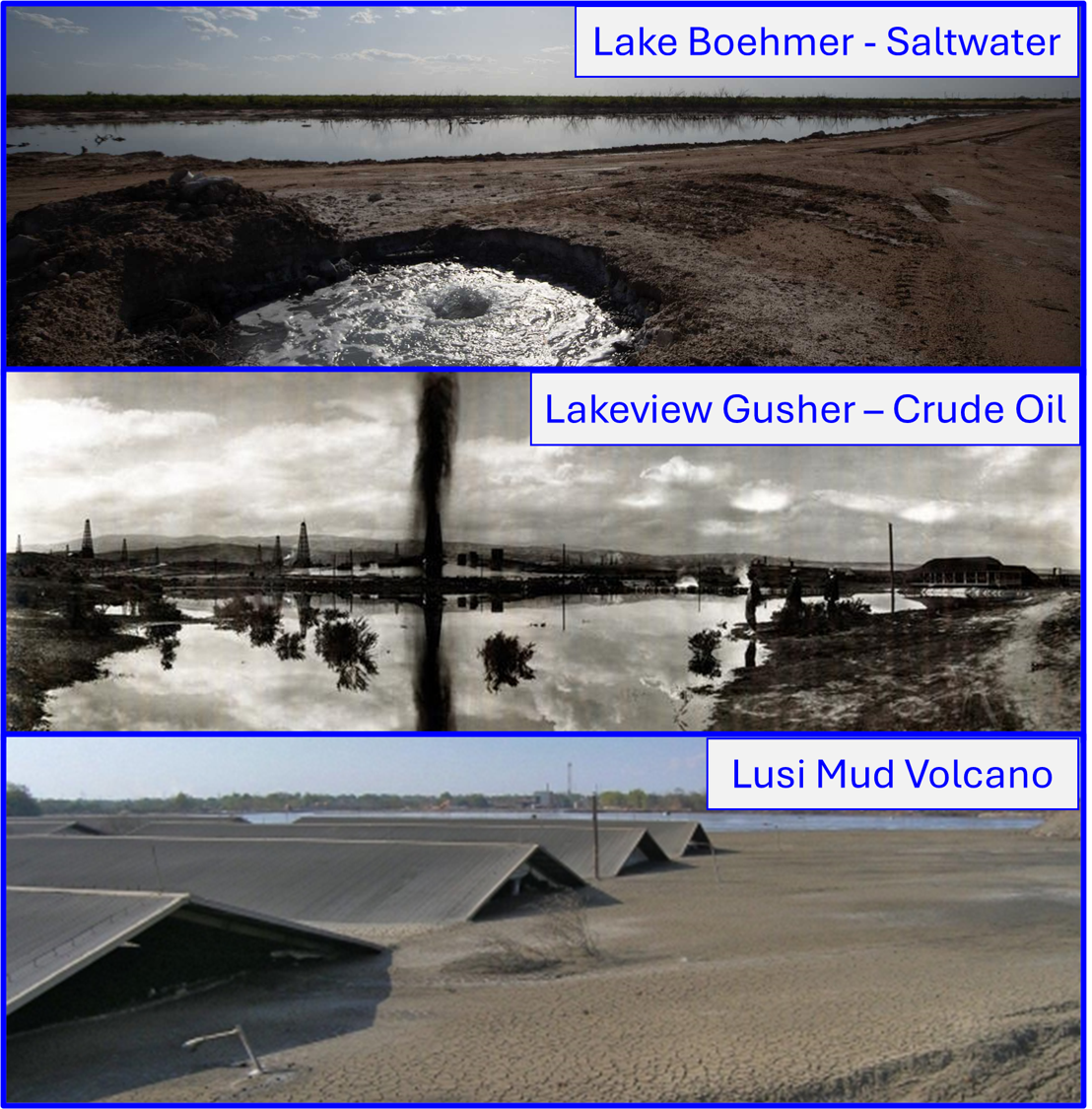
Under pressure
First, before we can understand why these lakes form, we need to know a bit about how fluids experience and respond to pressure underground.
You are almost certainly familiar with the concept of hydrostatic pressure even if you haven’t had it formally described to you. Know how when you swim to the bottom of a deep pool, you can feel the pressure increasing on you? Or as you go deeper in the ocean, the pressure keeps building and building? Well of course it does because you have a whole bunch of heavy water sitting on top of you.
The rate this pressure goes up is quite predictable. About one atmosphere of pressure (or one bar) for every 10 m deeper you go. So if you travelled 1 km deep in the ocean, you’re at a pressure of 100 atmospheres, which is quite a lot. This is hydrostatic pressure — it’s basically a rule about how much pressure goes up by as you get deeper.
Hydrostatic pressure is also the pressure that water wants to be at1. If the pressure is not at a hydrostatic value, then things are going to start happening so it can get back to the preferred hydrostatic value. Usually, that will involve the water moving from one place to another.
The same thing happens underground. Water exists in a series of cracks and spaces that are all connected together, and even the water that’s many kilometers underground will generally be at, or want to be at, a hydrostatic pressure. You can calculate its preferred pressure in atmospheres by taking the depth in metres and dividing it by 10.
But sometimes water is not at hydrostatic pressure. If it gets trapped in a pocket, then geological forces can start to squeeze it over a long time. With no way to get out, maybe because there is an impermeable lid of clay or salt on top, then the pressure of the water will start to build up. It can get quite high!
Ideally, the fluid would flow elsewhere, which would allow the pressure to drop back to normal values. This can happen if someone drills a hole through the geological layers containing it — in which case, the fluid might come gushing out the hole. If you have no way to divert it at the surface, then it will pool around the well and you’ll have yourself an accidental lake. In the examples below, I’ll talk about accidental lakes of saltwater, crude oil, and boiling mud.
Lake Boehmer, West Texas
If you have watched Amazon’s “Landman”, set in the Permian Basin of West Texas (near Midland), then you’ll be familiar with the setting. Flat and vast with scattered scrub and pumpjacks. You’ll find Lake Boehmer on Google Maps and it looks kind of tropical from a satellite view. The lake sprang up from a leaking well in the early 2000s.
“It’s actually kind of pretty,” Ty Edwards, manager of the Middle Pecos Groundwater Conservation District, said. “Cause in West Texas you don’t have a lot of bodies of water, so you pull up on it and it looks pretty, but it’s not usable.”
There’s an element of resigned acceptance in this quote whcih comes from some of the reporting on Lake Boehmer. The issue has been dragging on for some time and there’s quite a bit of frustration around who’s to blame and who should fix the well.
Lake Boehmer has a lot of 1-star reviews on Google Maps. Here’s a short video if you want to watch the well gushing.
The well itself was first drilled in 1951, exploring for oil. These risky prospecting wells are called wildcats. Although the driller got to 2700 feet, no oil was discovered. So, it was turned into a water well and then handed over to the local landowner who used it for irrigation.
Aside from water, there was also hydrogen sulphide coming out of the well. This is a dangerous gas in high concentrations — in 1953, a farmhand approaching the well was overcome and killed.
The well reportedly started leaking in the mid 1990s and then started gushing from about 2003. Supposedly more than 600 gallons per minute which is a bit more than an Olympic swimming pool every day. So, water in the aquifer being tapped into is clearly higher than hydrostatic, which is how it gets pushed up and out. These overpressured aquifers are called artesian — they are relatively common and often the source of natural springs.
You can see the evolution of Lake Boehmer in historic Google Earth satellite imagery, growing steadily over time to the 500 m across lake it is today. Evaporation and percolation down to the local groundwater are presumably limiting it from growing further.
The water coming out of the well is 3.5 times saltier than seawater, which is at the lowend of what you might find at the Great Salt Lake. The aquifer itself is presumably not this salty otherwise it wouldn’t have been used for irrigation. So the water must be picking that salt up through the leak itself, likely as it passes through shallow halite salt layers that it can dissolve. Now, that will only happen if you’ve got flow outside the well’s casing, which suggests some kind of failure of the cement that has since grown and widened. Water dissolving the salt will make it easier for subsequent water coming from below, which explains how a small leak became a large gusher.
Whatever the cause, the water coming out has built up a lovely-looking lake, with salt crystals pleasantly rimming the edge and the odd dead bird overcome by hydrogen sulphide. The problem is that no one can agree who should fix the gushing well. The owners can’t be found. The well is over 70 years old and so, unsurprisingly, the original driller is no longer in business. The Railroad Commission, Texas’s Oil & Gas regulator, doesn’t want to fix it. They probably have the expertise or at least the funds to do so, but that could set a precedent that has them on the hook for other orphaned wells in the future.
Lakeview Gusher
The early 1900s were a different time. Wildcatters would go looking for their fortune by drilling deep holes in the ground looking to punch into an overpressured pocket of oil. You’d know if you were successful if a black fountain came exploding back up your well. But this would sometimes destroy your drilling rig and your workers might need to run for their lives. It was also a waste of valuable oil.
The Lakeview Gusher started when drilling in California in 1910 hit a pressurized oil pocket. Like all fluids, oil is subject to the rules of pressure hydrostatics2. Given the opportunity to not be underground at extremely high pressure, the oil made a hasty and vertical exit through the newly-made hole in the top of the reservoir.
The owners were excited, because they were clearly going to be rich. The problem is that this particular gusher didn’t stop for 18 months — it just kept fountaining on. The oil geyser reached a height of 200 ft, from which you can calculate that oil was exiting the well at about 125 km/hr. That’s a lot of momentum to try and get a pipe and valve on top of! It quickly smashed the drilling rig.
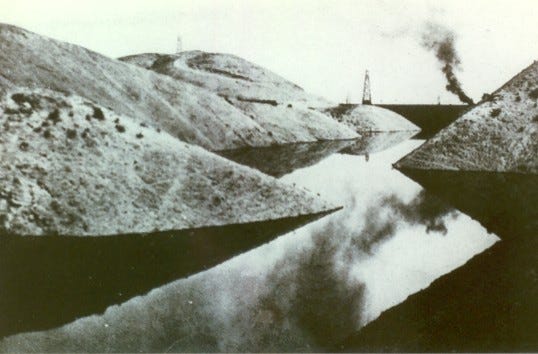
The crude rained down and started pooling at the surface. Dikes were built to channel it and a dam was constructed to create a small lake in a canyon (see this article for more oil lakes). Some folk tried to build a wooden box that could be hauled over the top to cap the geyser — it got so spectacularly smashed by the force of the gushing oil that it is now immortalized as a postcard. An article in Scientific American details the assembly of a clever stockade and raft that could be pulled over the gusher by cables.
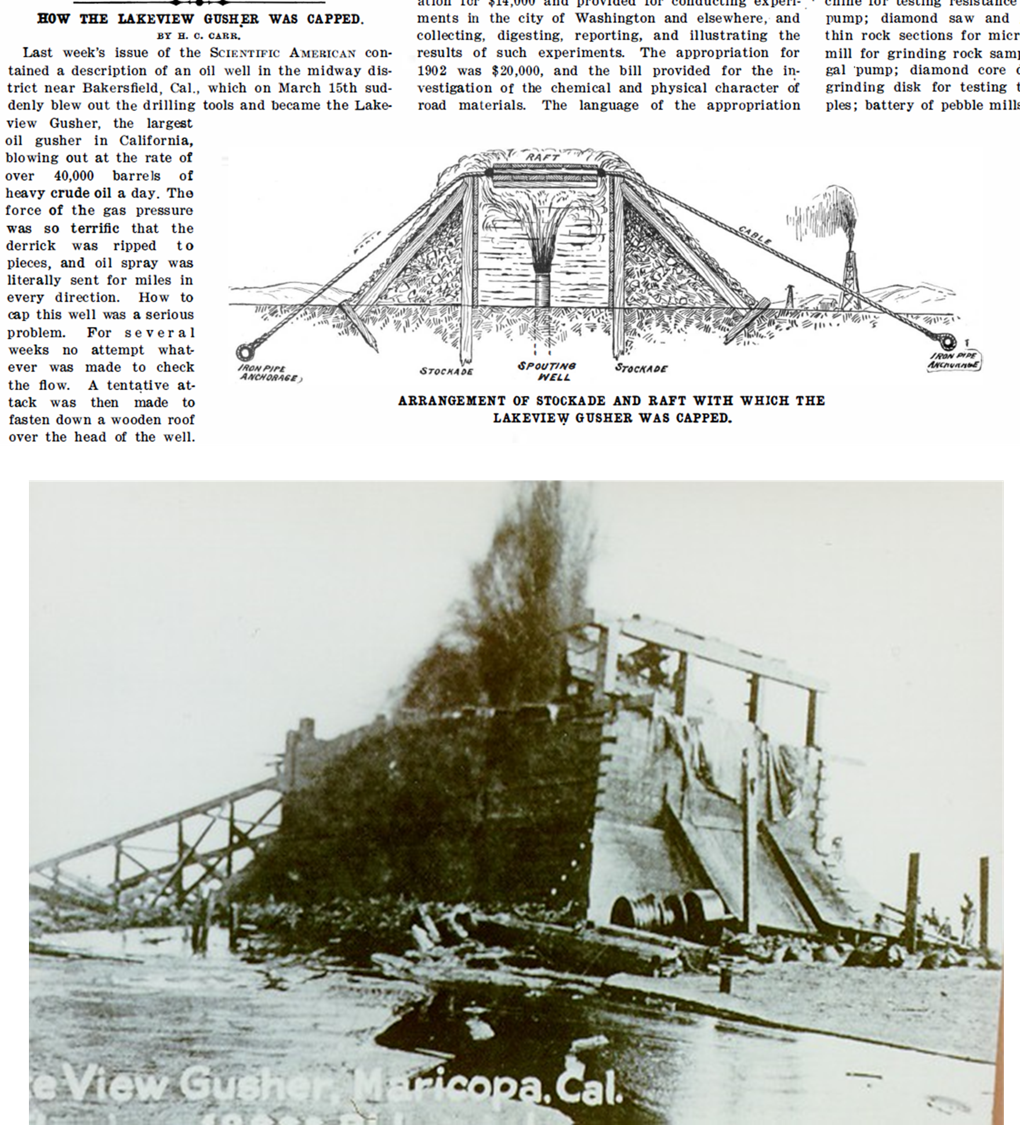
Eventually, a large dike ring was built around the gusher with sandbags to build a pool of oil over top of the well. When it filled to a depth of 20 feet, this stifled the flow of oil coming through enough to get things under control. The well died a year later.
The lesson here is that it’s not just old age that can cause a well to fail, which was the case at Lake Boehmer. Control can also be lost during drilling if the pocket is overpressured enough and you don’t have the right technology.
These days, producing a gusher is quite frowned upon. They’re dangerous, polluting and a waste of resources. Blowout preventers are a type of valve designed for the top of the well to avoid these situations. They work by mechanically choking off flow in the well if a sudden pressure surge is detected. While this technology is now fairly standard, like all things, they can occasionally fail — this was a key factor in the Deepwater Horizon disaster. Unfortunately, sometimes even a blowout preventer won’t stop a disaster.
Lusi Mud Volcano
The Lusi mud volcano is another remarkable case of geological overpressure. It started erupting in May 2006. Tens of thousands of people have since had to leave their homes, and enormous levees have been erected to contain the mud flow. The volcano itself brings boiling mud (about 60% water) to the surface. But, mud being wet and slippery (technical terms), it doesn’t build up a recognisable volcanic cone and rather just spreads out in a big smeary lake. And much like Lake Boehmer, this has been a long-lived discharge — the volcano is still erupting today.
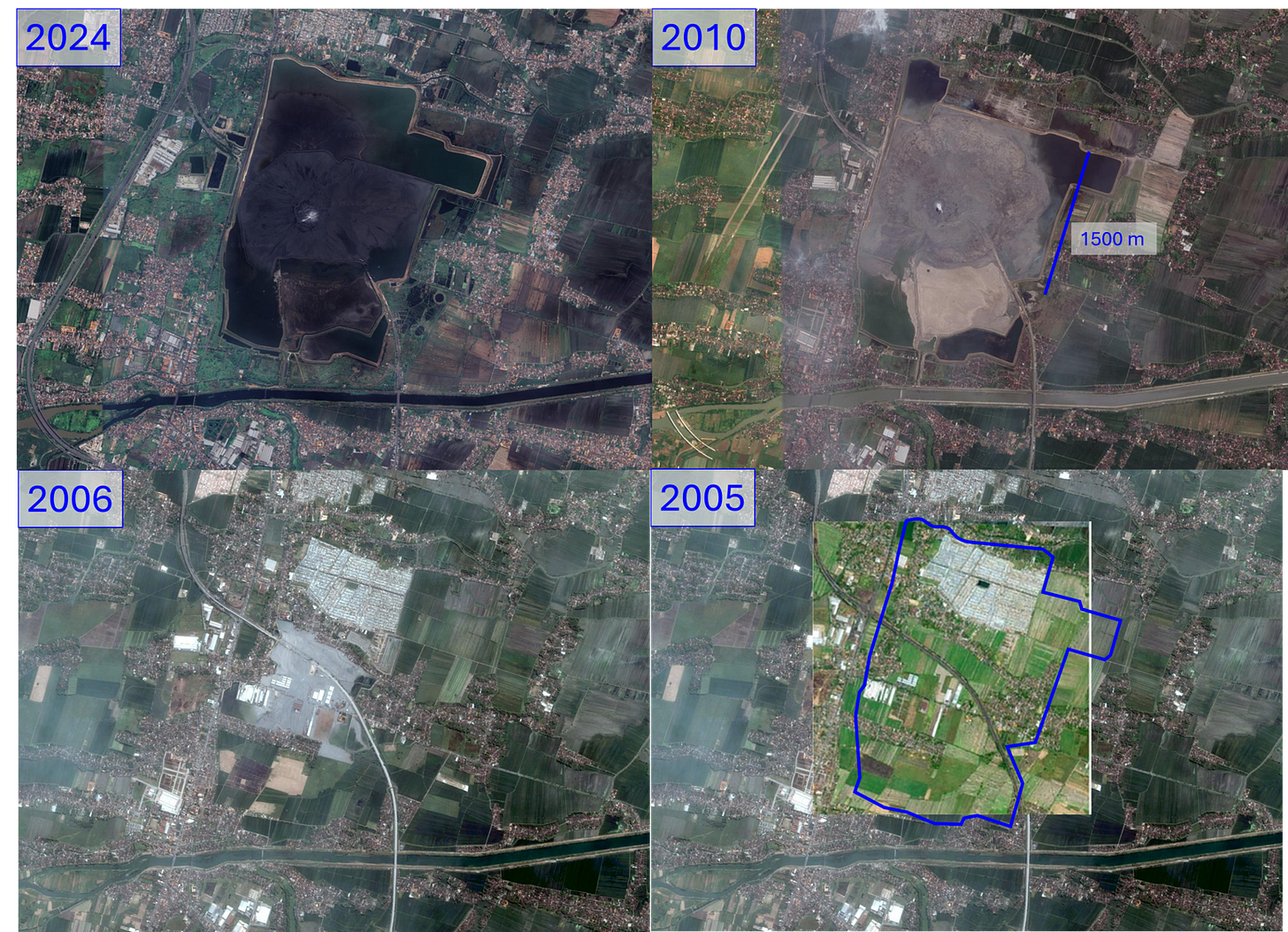
So, how does the pressure get so high underground that it’s still pushing out mud today? This region of East Java is prone to these kinds of eruptions. Part of the reason is that mud sediments are being deposited and then buried quite fast (by geological standards), which piles weight on top of the rock and squeezes the water trapped in it to very high pressures. Because it’s happening so quickly, the water pressure has no opportunity to be slowly release or relax to normal hydrostatic conditions.
There was some oil & gas drilling at the site of the eruption, and that is notable. However, the mud didn’t erupt through the well or blowout preventer, but rather started coming out of a fissure in the ground only a couple hundred meters away from the drilling (suspicious). Some folk thought to attribute the eruption to shaking from a distant earthquake a few days prior, but this was refuted fairly robustly on analysis of similar earthquakes as well as the drilling records.
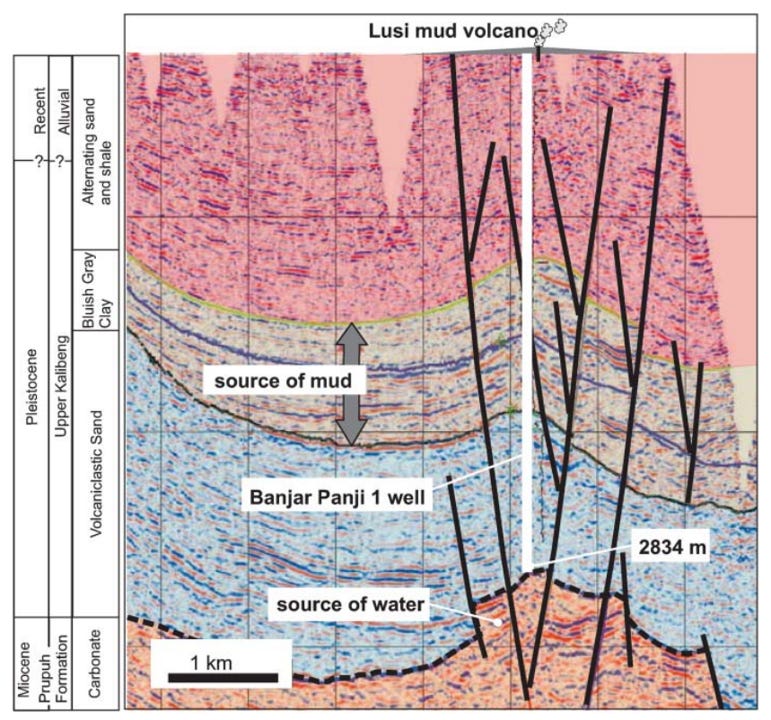
The eruption mechanism itself is quite interesting. First, the drilling records show that a deep, overpressured limestone aquifer was encountered at 2.8 km depth. The water here was very hot, around a 100°C. This explains the boiling mud and “50m high flares of steam” during the early days of the eruption.
However, the mud itself doesn’t come from this deep aquifer. Rather, that was picked up along the way as the water rose up through shallow mudstones. This is similar to how the water rising at Lake Boehmer picks up salt from shallow halite layers closer to the surface. The rising mud likely then took advantage of shallow faults and fractures as a pathway to the surface — close to, but not through the well itself. No blowout preventer to stop this flow.
The volcano is likely to keep erupting for decades although the rate of mud will continue to slow down over time. Given scientific disagreements over whether earthquakes or drilling are responsible, there has been little appetite for the government to step in or to address the issue of compensation for displaced families.
What can we learn?
This post was intended as a short tour of overpressure in the subsurface and the kinds of problems it sometimes makes. It should now be clear that fluids underground can exist at very high pressure. This is not in itself a problem while there are geological layers that prevent them from flowing to the surface. However, drilling can create a risk of breaching this containment.
This is why good drilling engineers are particularly attentive to monitoring and managing high pressure in wells. Modern drilling techniques, including mudweight control3 and blowout preventers, are generally sufficient to safely manage high pressure encounters. Today, loss of well control — such as at Lusi and Deepwater Horizon — is the exception, compared to over a century ago when wildcatters sparking gushers were more common.
A second issue can arise once a well is completed and handed over to a responsible party. If the well is forgotten and falls into disrepair it can lose integrity and start to leak, as happened at Lake Boehmer. There are vast numbers of these older, sometimes forgotten wells out there, constructed with decades-old technology.
Sometimes, overpressure in an aquifer is not due to natural processes, but may arise through human interference. A widespread practice is to use deep formations as repositories to dispose of unwanted fluids (e.g., wastewater, carbon dioxide). But injecting large volumes of fluid can cause the pressure to rise over widespread areas, and this can lead to those fluids popping back out from underground elsewhere. This might have been the case of a recent spectacular gusher in West Texas.
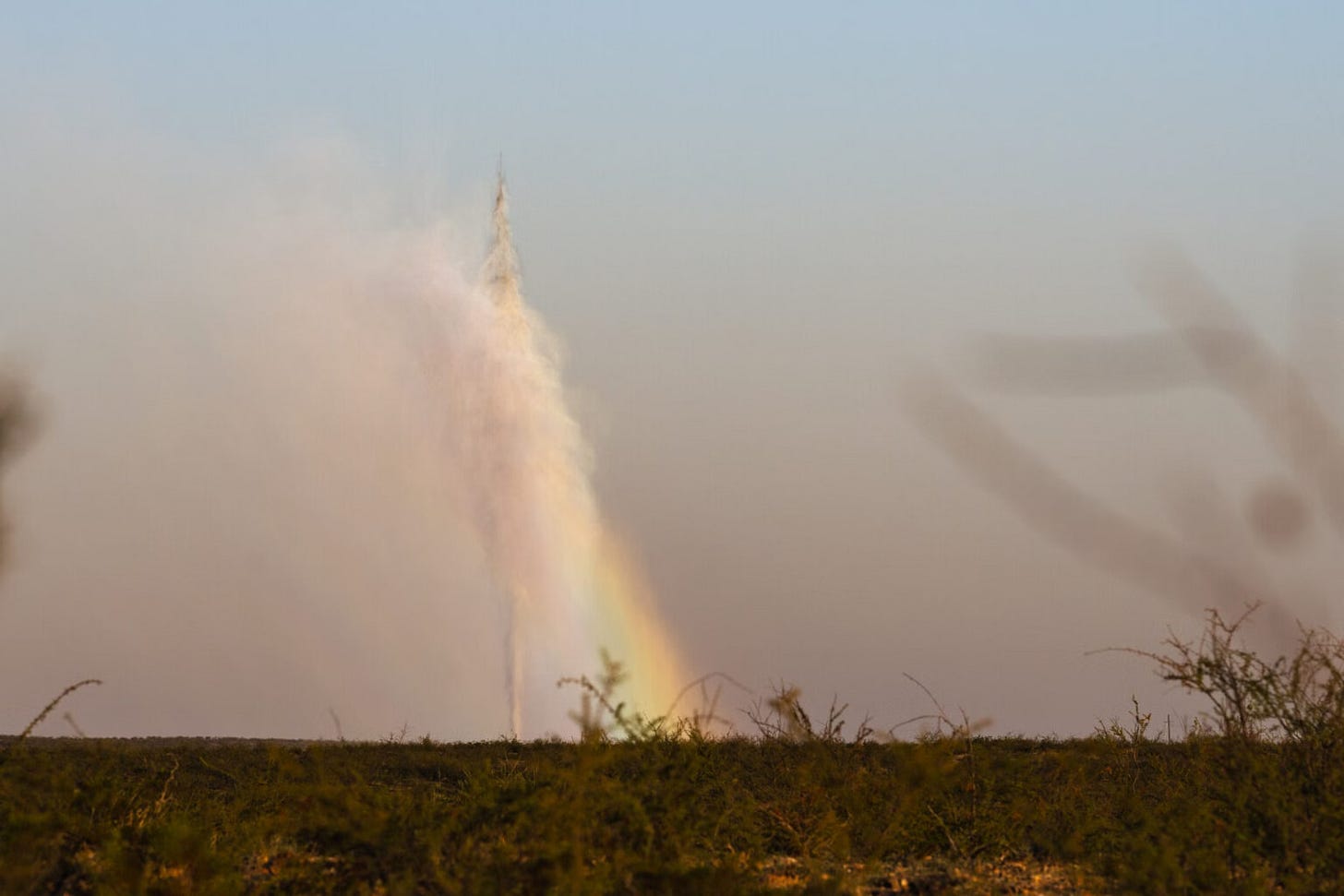
In this sense, a vast inventory of old wells in various states of repair or abandonment presents a future liability, particularly where they are connected into formations that may one day be used for disposal. When loss of control or leakage does occur, it can be difficult to assign a responsible party.
Other times, an environment of high pressure can exert forces on the rocks themselves, pushing apart the two sides of a fracture or fault. When this happens, the rock can start to slide against itself. If that happens over a large enough area, and in a runaway fashion, the result is an earthquake you might feel at the surface. This is the problem of induced seismicity and something I’ll write about in a future post.
More accurately, hydrostatic pressure is the equilibrium state in which the reaction force of the water’s pressure balances the weight force of the water above it, resulting in no net acceleration due to these forces.
The natural hydrostatic pressure for oil at a given depth will be lower than water. That’s because crude oil is less dense than water. So, all else being equal, there will be a lesser weight of fluid lying above and hence lower pressure.
Modern drilling typically uses heavy ‘drilling mud’ to balance the pressure underground so fluid doesn’t rush into the well.


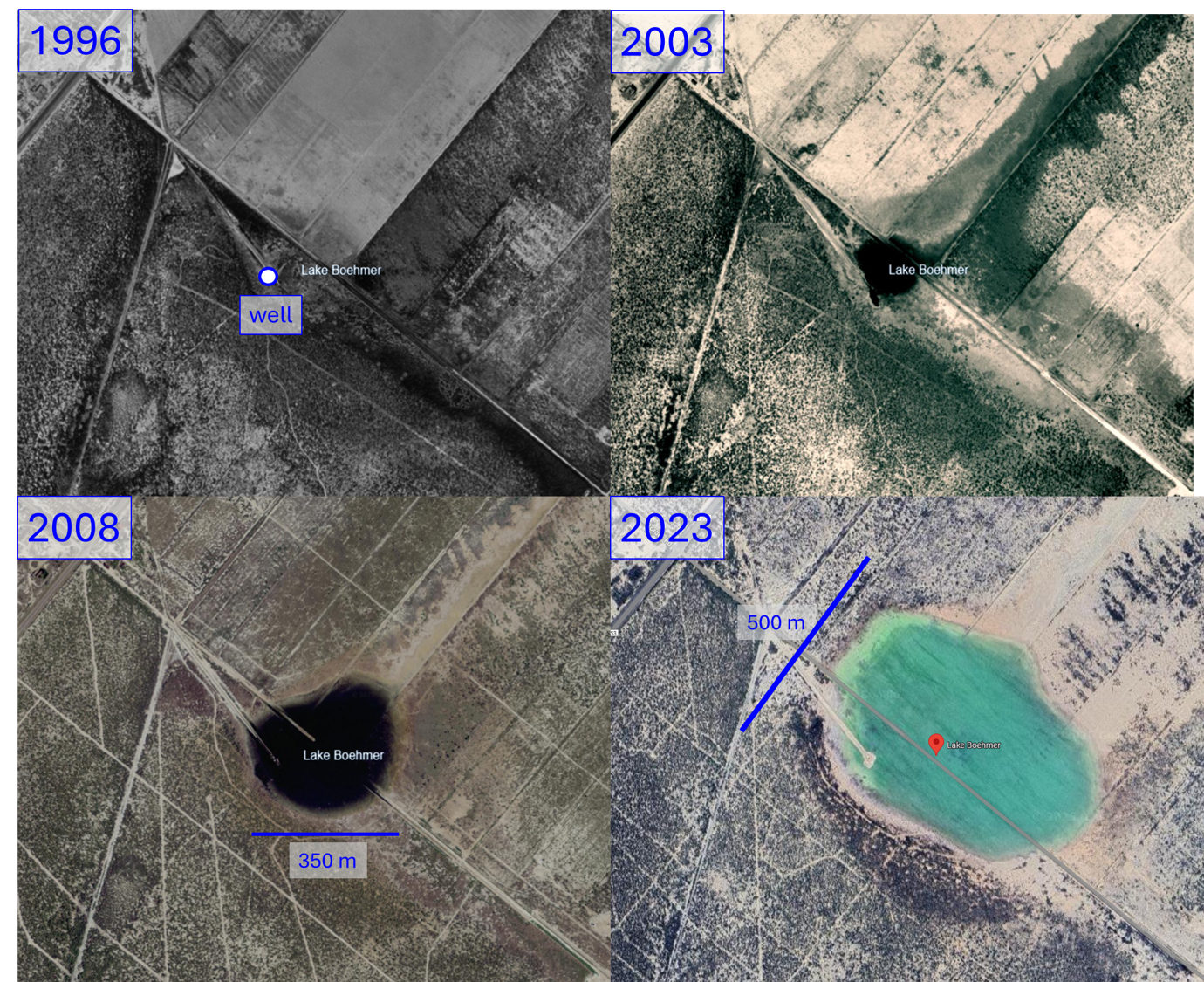
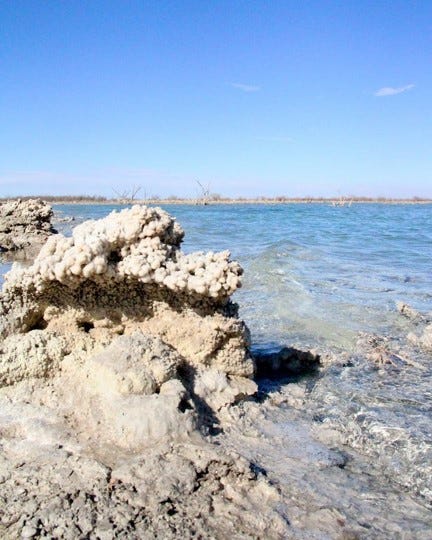

Mangapoike landslide is at 38°51'5.87"S 177°39'42.05"E
The landslide occurred in summer, little precedent rainfall, no local seismicity.
The closest Geonet GNSS station recorded a vertical uplift event coincident with
the landslide.
Kauhauroa-1 well is at 38°56'52.85"S 177°25'35.84"E downdip from Mangapoike.
The well encountered significant gas overpressures and achieved a stabilized flow of 11.5 million standard cubic feet per day. The well was not completed; the drill pipe was stuck, and it is still in place waiting to be plugged and abandoned.
We have seen the results of overpressure on the East Coast North Island New Zealand. Wells drilled near Wairoa in the last century had pressures near lithostatic, and some of them have not been plugged and abandoned. They are orphan wells. In 2018 a large landslide occurred in the sandstones updip, and there was gas present at the surface. As a result there is now a 50m deep lake behind the landslide dam (Mangapoike). This is another accidental lake.